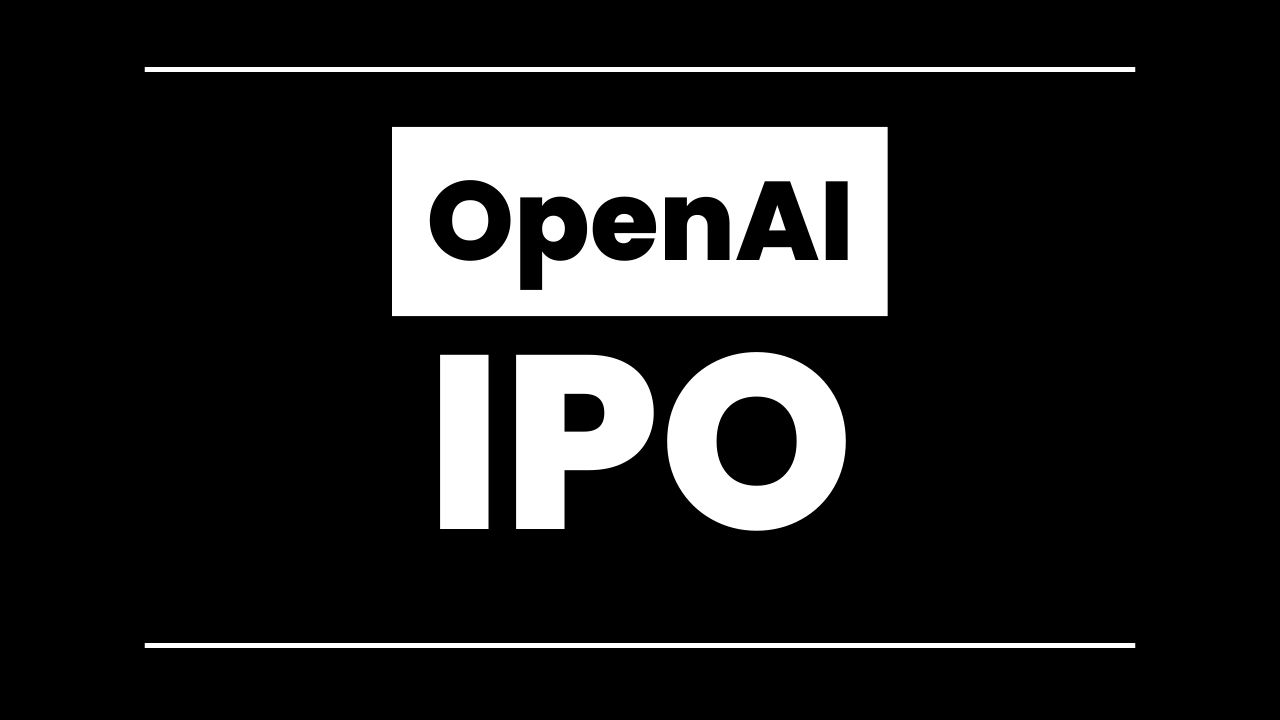In the rapidly evolving world of artificial intelligence, few companies have captured the global imagination like OpenAI.
Founded with a mission to ensure AI benefits all of humanity, OpenAI is on the cusp of a transformative moment. As whispers of a potential initial public offering (IPO) grow louder amid blockbuster partnerships and sky-high valuations, investors are buzzing about what a public debut could mean for the future of tech. This article dives deep into OpenAI’s IPO prospects, spotlighting its groundbreaking collaboration with NVIDIA – the powerhouse behind the AI chip revolution – and unpacking the latest developments that could propel this ChatGPT creator to Wall Street stardom.
Basic Company Information
OpenAI was established in December 2015 as a non-profit research organization in San Francisco, California. Co-founded by tech visionaries including Elon Musk, Sam Altman (current CEO), Greg Brockman, Ilya Sutskever, and Wojciech Zaremba, the company started with a $1 billion pledge from its founders and early backers. Today, it employs over 1,000 people and has evolved into a hybrid structure: a non-profit parent overseeing a capped-profit subsidiary.
This unique setup balances ethical AI development with commercial growth, though recent restructurings are paving the way for more traditional for-profit operations.
Also Read – I Created the Best Bitcoin Guide You’ll Ever Read
What the Company Does?
At its core, OpenAI develops advanced artificial intelligence models and tools that push the boundaries of human-like reasoning and creativity.
Its flagship product, ChatGPT, launched in late 2022, revolutionized conversational AI, enabling everything from casual chats to complex problem-solving. Beyond consumer-facing apps, OpenAI powers enterprise solutions like DALL-E for image generation, Whisper for speech recognition, and APIs integrated into products from Microsoft Copilot to custom business workflows.
The company’s focus on “artificial general intelligence” (AGI) – AI that can outperform humans at most economically valuable work – drives innovations in healthcare diagnostics, code generation, and scientific research.
Which Sector It Belongs To?
OpenAI operates squarely in the technology sector, with a sharp emphasis on software and digital services.

What Industry It Operates In?
Within the tech sector, OpenAI is a leader in the artificial intelligence (AI) and machine learning industry. This niche encompasses generative AI, natural language processing, and large language models (LLMs), fueling applications across entertainment, finance, education, and more. The industry’s explosive growth – projected to hit $1.8 trillion by 2030 – stems from AI’s role in automating tasks, enhancing decision-making, and unlocking new efficiencies.
Main Peers or Competitors
OpenAI faces fierce competition from a roster of AI heavyweights. Key rivals include:
- Anthropic: Backed by Amazon, creators of the Claude AI model, valued at $183 billion as of mid-2025.
- xAI: Elon Musk’s venture behind Grok, targeting a $200 billion valuation in ongoing talks.
- Google DeepMind: Google’s AI arm, powering Gemini models with vast data resources.
- Meta AI: Focused on open-source Llama models, leveraging Facebook’s social data.
- Cohere and Stability AI: Specialized players in enterprise search and image generation, respectively.
These competitors are vying for talent, compute power, and market share in a high-stakes AI arms race.
Introduction to the NVIDIA-OpenAI Partnership: Fueling the AI Revolution
No discussion of OpenAI’s trajectory is complete without highlighting its pivotal alliance with NVIDIA, the undisputed king of AI hardware. What began as a symbiotic relationship – OpenAI relying on NVIDIA’s GPUs to train massive models – has escalated into a game-changing $100 billion strategic partnership announced on September 22, 2025. NVIDIA, led by CEO Jensen Huang, will invest up to $100 billion in OpenAI, securing a significant equity stake while committing to supply advanced chips for a colossal data center buildout.
This deal, dubbed the “biggest AI infrastructure project in history,” aims to deploy at least 10 gigawatts of NVIDIA-powered compute capacity—equivalent to 4–5 million GPUs and enough energy to power over 8 million U.S. households. The first sites are slated to go online in late 2026, supporting OpenAI’s “Stargate” initiative for next-generation AI models. Negotiations, involving late-night calls between CEOs Sam Altman and Jensen Huang, underscore the urgency: OpenAI needs unprecedented scale to stay ahead, while NVIDIA locks in a key customer amid chip shortages.
This partnership is not just about hardware; it is a bet on AI’s economic dominance. It complements OpenAI’s ties with Microsoft (over $13 billion invested) and SoftBank, but NVIDIA’s role is uniquely foundational—its CUDA software and Blackwell/RTX GPUs optimize models like the newly open-sourced gpt-oss-120b and gpt-oss-20b.
OpenAI IPO Detail Table
While OpenAI has not yet filed for an IPO, recent restructurings – including a preliminary Microsoft deal for a public benefit corporation (PBC) conversion – signal readiness for a 2026 debut. Speculation points to a massive offering, potentially rivaling the largest tech IPOs.
Below is a projected overview based on current funding rounds, valuations, and analyst estimates (as of September 2025).
Note: These are forward-looking and subject to SEC filings.
| Aspect | Details |
|---|---|
| IPO Date | Expected Q2–Q3 2026 (post-restructuring; no official filing yet) |
| IPO Pricing | $70–$90 per share (based on $500B valuation and ~5.5B–7B shares outstanding est.) |
| IPO Listing Date | Late 2026 (NASDAQ debut anticipated) |
| IPO Ticker Symbol | OPAI (proposed; unofficial) |
| IPO Valuation | $450B–$500B (up from $300B post-March 2025 funding; could hit $1T post-NVIDIA deal) |
IPO Summary
If OpenAI proceeds with its IPO, it could raise $40–$50 billion in fresh capital – the largest tech IPO ever-dwarfing Saudi Aramco’s $29.4 billion debut.
This would involve offering 500-700 million shares, a mix of primary (fresh) issuance to fund AI infrastructure like Stargate and secondary sales allowing early investors and employees to cash out. The structure leans toward a fresh issue of shares with an Offer for Sale (OFS) component. Proceeds would accelerate compute ambitions, with CFO Sarah Friar noting needs up to $500 billion for gigawatt-scale builds. At a $500 billion valuation, this could value shares at premiums seen in peers like NVIDIA, but risks include regulatory scrutiny from FTC probes and Elon Musk’s ongoing lawsuit over mission drift.
Who Could Be the Underwriters of OpenAI IPO?
As OpenAI has not filed S-1 paperwork, underwriters remain unconfirmed, but industry insiders point to a powerhouse syndicate led by Goldman Sachs and Morgan Stanley, with JPMorgan Chase as co-managers – firms that handled mega-IPOs like Uber and Airbnb.
Microsoft’s influence could bring in Bank of America, while SoftBank ties favor Citigroup. These banks would handle roadshows, pricing, and allocation, earning fees of 1–2% on the deal.
Also Read – The Majority of Money, Not People, Drives Market Momentum
Key Developments Around OpenAI’s IPO Path
OpenAI’s journey to potential public status has been anything but linear. In March 2025, it shattered records with a $40 billion funding round led by SoftBank, ballooning valuation to $300 billion and annualized revenue to $10 billion (up from $3.7 billion in 2024).
By August, employee tender offers eyed $500 billion, amid talks with Microsoft to rework their pact – unlocking IPO eligibility while preserving Azure exclusivity.
Challenges abound: regulatory probes in California and Delaware question the non-profit’s control, while Musk’s lawsuit alleges fraud. Yet positives dominate – 700 million weekly ChatGPT users, open-sourcing models with NVIDIA, and Stargate’s $500 billion ecosystem with Oracle and MGX.
Why OpenAI’s IPO Could Redefine Investing?
An OpenAI public debut is not just a stock play; it is a vote on AI’s role in society.
With NVIDIA’s muscle, Microsoft’s backing, and revenue exploding, this could be the most anticipated listing since Facebook’s 2012 splash. For investors, indirect exposure via NVDA or MSFT offers a bridge, but the real action awaits OPAI’s ticker light-up.
This article is for informational purposes only and should not be considered financial advice. Investing in stocks, cryptocurrencies, or other assets involves risks, including the potential loss of principal. Always conduct your own research or consult a qualified financial advisor before making investment decisions. The author and publisher are not responsible for any financial losses incurred from actions based on this article. While efforts have been made to ensure accuracy, economic data and market conditions can change rapidly. The author and publisher do not guarantee the completeness or accuracy of the information and are not liable for any errors or omissions. Always verify data with primary sources before making decisions.

